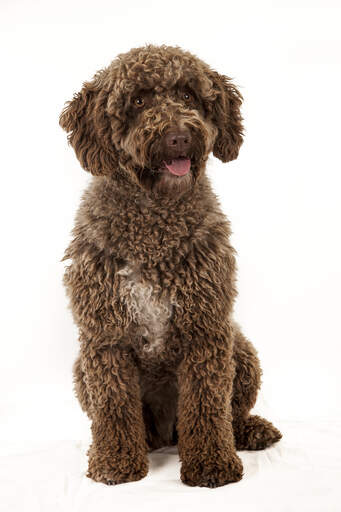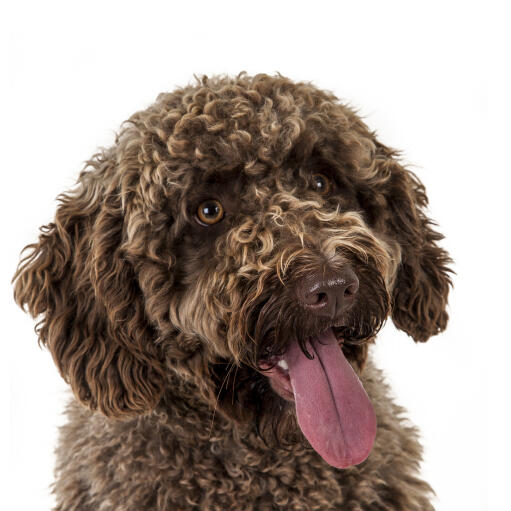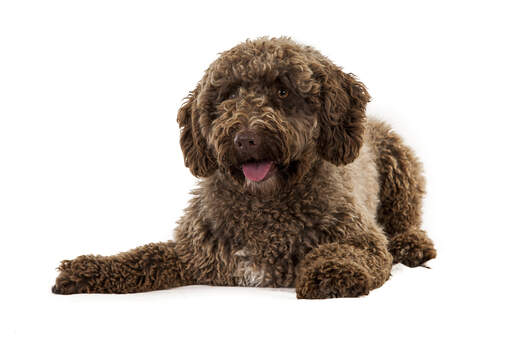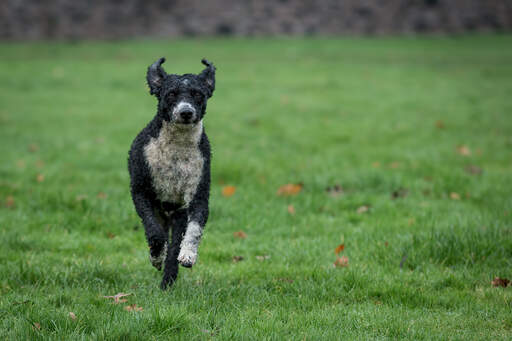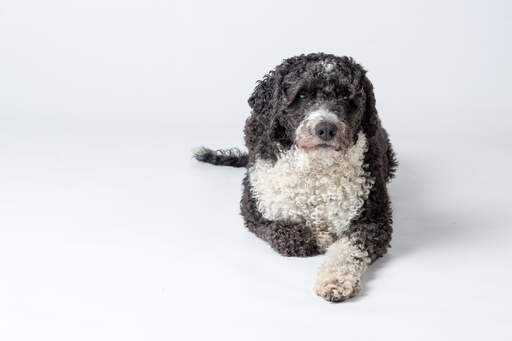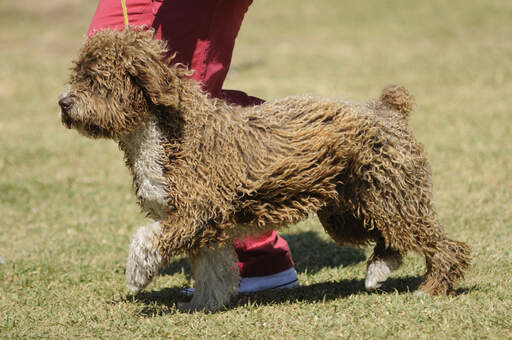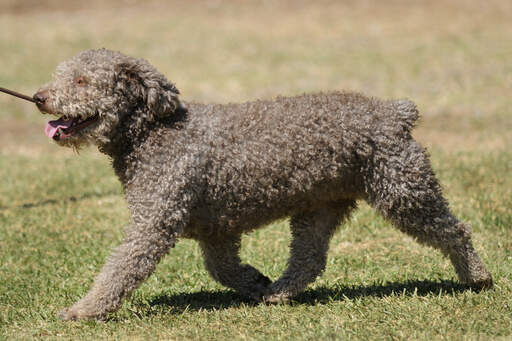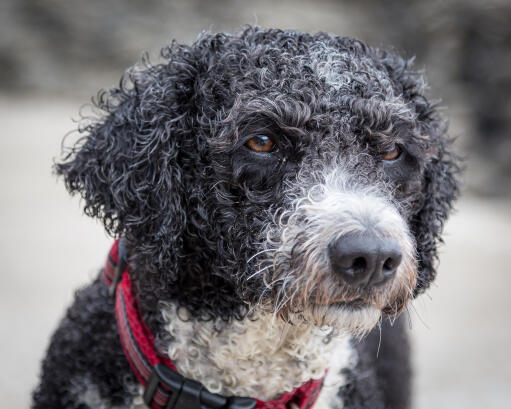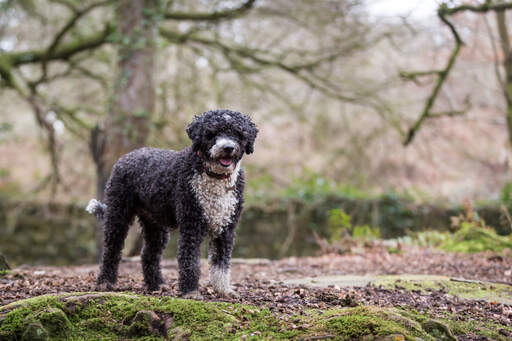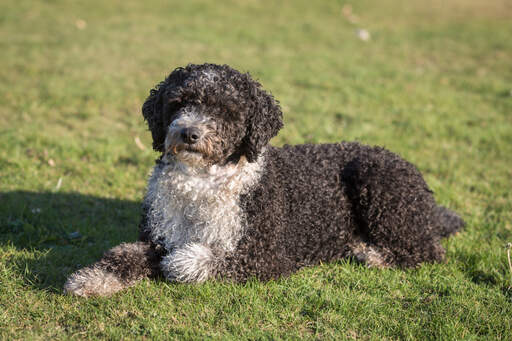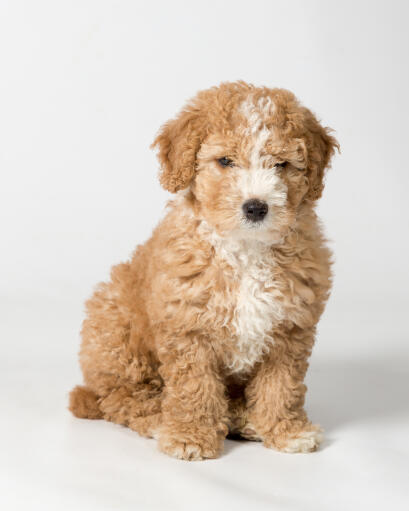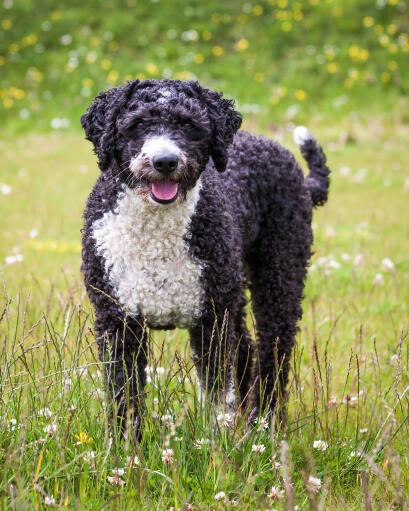Spansk vandhund












History
The History of the Spanish Water Dog is complicated and not that clear. Wooly coated water dogs have been used for thousands of years and the exact origin of the SWD is not known. It is likely that they originated in Turkey and were brought to Spain many years ago.They are similar to Portuguese Water Dogs and Irish Water Spaniels, but a distinct breed of their own.They were used to herd sheep, retrieve, guard sheep and property and also my fishermen to retrieve nets.
Behaviour
The SWD is a curious and intelligent breed. They like to be around people and love children. They tend to bond closely with their main carer, but are affectionate to everyone in the family, including other dogs and cats if raised with them. They can sometimes try and herd small children! They can be aloof with strangers at first, but once you allow them into your home, the SWD will accept them and show affection too. They have a strong guarding nature and will warn you when someone is at the door, so need early socialisation and the chance to get used to visitors. They are attentive and happy and will want to spend time around you. They don't do well being left alone for too long and many owners crate train their SWDs.
The SWD needs to learn and work. They enjoy it and will become easily bored if just having one walk a day. Leaving them with food puzzles and toys will help break the boredom. Training should be started on day one and they learn quickly. They need consistent training and a firm, yet kind manner to get the best out of them. The earlier you start training the better as they can become stubborn with age. Retrieval, especially in water, is great fun for them and using a floating dummy will keep them entertained for hours. It will also reinforce recall which can sometimes be a problem with individual dogs.
They need a fair amount of exercise to wear them out and a long daily walk, plus play session should be enough. The breed have been used as therapy dogs, Agility, in bomb detection and for search and rescue; there is no end to their talents. The main priority is to keep them busy. A tired dog will be calm and content at home. Once they have had a walk they'll curl up and sleep, trying to get as close to you as possible.
Caring for the coat can take time. The coat should not be brushed as it will naturally cord. A bath every so often will clean the coat, but it should be allowed to dry naturally and not fluffed up with a towel. Blotting the coat to remove most of the water is ok. The coat does not moult, so professional grooming is advised.
Canine Hip Dysplasia and Progressive Retinal Atrophy are the main concerns with the breed. They can also be prone to ear infections if allowed access to water.
Temperament
Spanish Water Dogs possess an adaptable and happy go lucky temperament. Very versatile dogs that love to retrieve but also have strong herding instincts the Spanish Water Dog is a very athletic animal with outstanding stamina. Devoted to their families these dogs can be very affectionate and for a well rounded dog it is important to socialise early and often!
Health Problems
Health problems that may affect Spanish Water Dogs include canine hip dysplasia (CHD), ear infections and musculoskelatal injuries (particularly under 1 year old).
Breed Details
- Status: Common
- Life Expectancy: 10 - 14 years
- Weight: 18 - 22 kg
- Højde: 16 - 20"
- Rare: Nej
- Coat: Medium - Hypoallergenic
- Grooming Requirements: More than once per week
- Town or Country: Land
- Minimum Home Size: Small House
- Minimum Garden Size: Small to Medium Garden
- Breed Type: Gun Dog
- Størrelse: Medium
- Energy Level: Høj
- Exercise Required: Up to 1 hour

